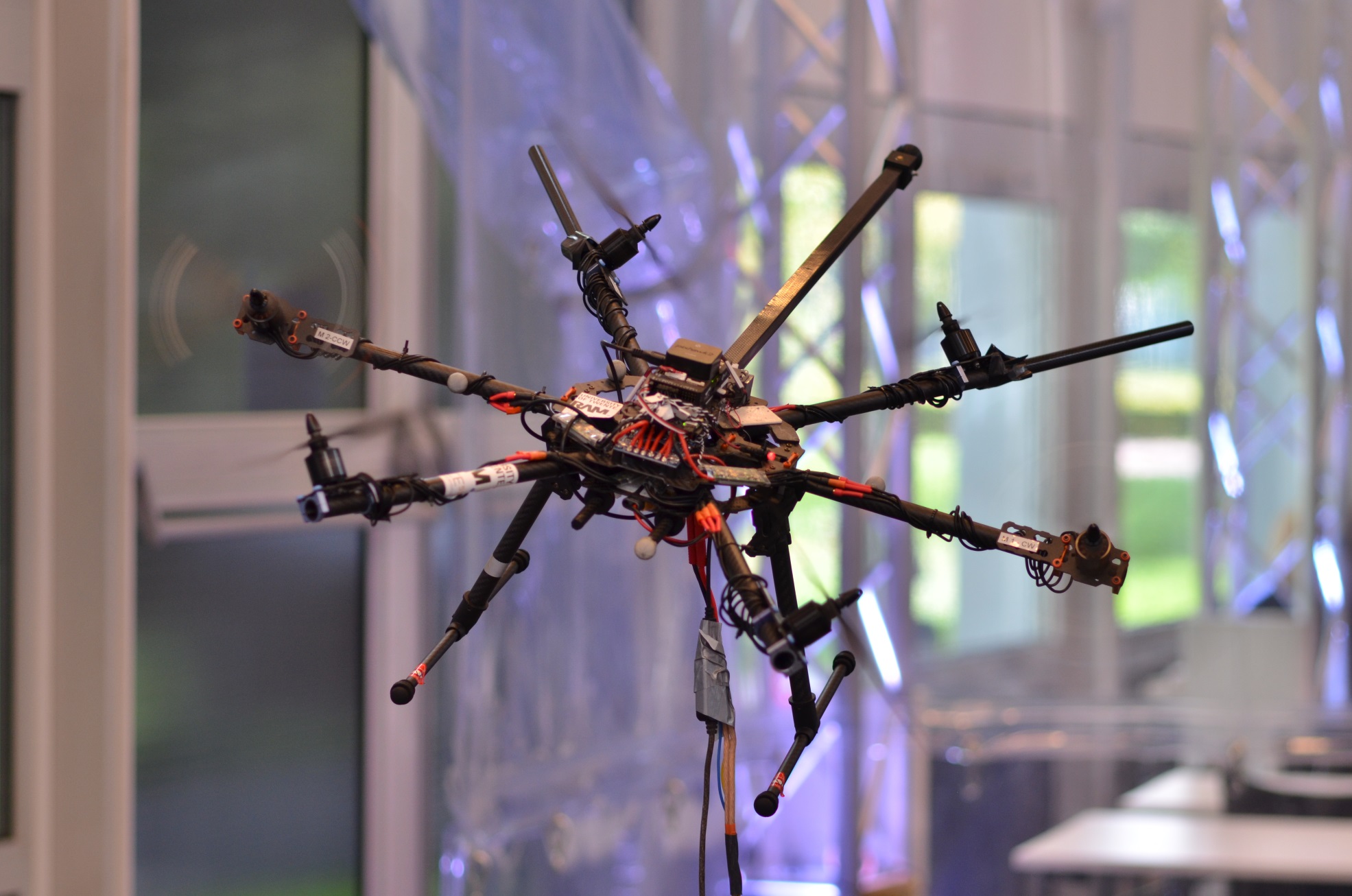Research Overview
In this work, we consider the problem of interaction control of fully-actuated UAVs in the port-Hamiltonian framework. The interaction behavior of an aerial robot can be modeled effectively and elegantly by power ports in port-Hamiltonian systems
theory. In this paradigm the interaction is perceived as an exchange of energy between the aerial robot and the environment, instead of an independent control of pose or wrench. This is the underlying basic idea of the impedance control technique.
The novelty of this work is the reformulation of the geometric impedance controller of [15] as an energy-balancing passivity-based control (EB-PBC) problem for a fully-actuated UAV modeled geometrically on SE(3). We derive a controller for the motion and interaction control of the UAV, in addition to a rigorous mathematical derivation and analysis of the closed loop system. Moreover, we validate the presented controller experimentally on a fully-actuated planar hexarotor to show that its passivity-based nature allows full exploitation of the UAV’s capabilities. This is demonstrated by controlling the hexarotor near its control input limits.
Publications
| Ramy Rashad, Federico Califano, Stefano Stramigioli (2019) Port-Hamiltonian Passivity-Based Control on SE(3) of a Fully Actuated UAV for Aerial Physical Interaction Near-Hovering, IEEE Robotics and Automation Letters 4(4), p. 4378-4385, doi:10.1109/LRA.2019.2932864 |
By extending the geometric impedance controller with a wrench observer, we can selectively reject distrubances along directions perpindicular to a surface in order to increase the tracking behavior of the controller. In the experiment below, we demonstrate an aerial writing scenario using this extended impedence controller.
